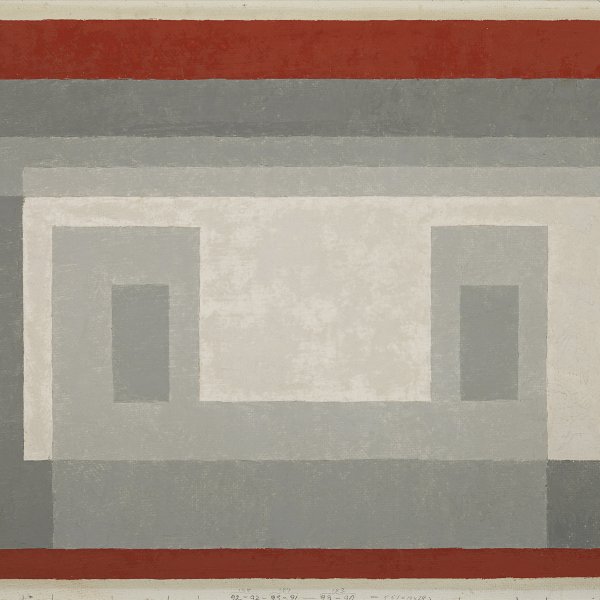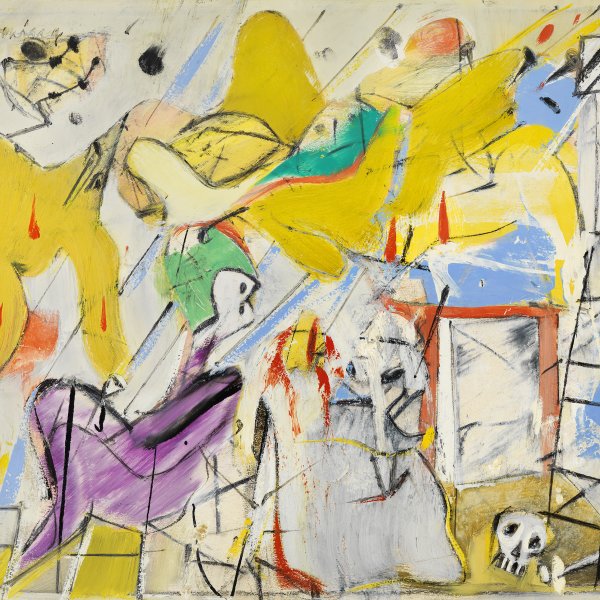Hugging
Arshile Gorky, a painter of Armenian origin, might be defined either as the last of the Surrealists or as the first of the Abstract Expressionists. His evocative dream world recalls that of Surrealism, while his emphasis on the autonomy of line, form and colour is a clear precedent of Abstract Expressionism. Meyer Schapiro summed up this duplicity and commented that Gorky described an atmosphere suited to the purposes of modern fantasy.
The Museo Thyssen-Bornemisza Hugging belonged to The Museum of Modern Art in New York for a time. It was executed the year that the artist’s first one-man exhibition was held at the Julien Levy Gallery. The catalogue included a short introduction by André Breton, who had met Gorky in 1944 and immediately became his main champion, though he never managed to persuade him to join the Surrealist group. The leader of French Surrealism had sought refuge in New York at the time, where he had drawn together a small circle of Surrealists to which Max Ernst, André Masson, Yves Tanguy and Roberto Matta belonged. Their presence on the art and literary scene aroused the interest of the young American artists.
The present painting, also known as Good Hope Road II. Pastoral, may be considered a typical example of Gorky’s biomorphic abstraction, which anticipated American Action painting, a movement which blended seemingly opposite trends such as Cubist spatial construction and Surrealist automatism. It was executed at the home of his friend David Hare in Good Hope Road, Roxbury, Connecticut, where Gorky lived from 1944 until his death in 1948.
In an interior illuminated by firelight, two figures can be made out locked in an embrace, while a window in the upper part establishes a relationship between exterior and interior. Julien Levy, the painting’s first owner, described it as a depiction of the artist with his dog and a cow, which explains Gorky’s interest in basing his paintings on his personal experiences. Various influences can be identified in the composition: from Matta he borrows the amoebic forms of the setting and the manner of applying the paint in fine layers; from Picasso the dissociation between form and content; and the sinuous outlines of the hybrid, floating and flaming forms are derived directly from the paintings of Joan Miró. Gorky combines these influences to create a continuous structure by interweaving the different elements of the painting against an indefinite background created from greatly diluted pigments applied at random, and adds his own hallmark of exuberant gesture. In Hugging there is an unquestionable dichotomy between a real world, which seeks to convey universal emotions, and a surreal dream world springing directly from the unconscious.
Paloma Alarcó









